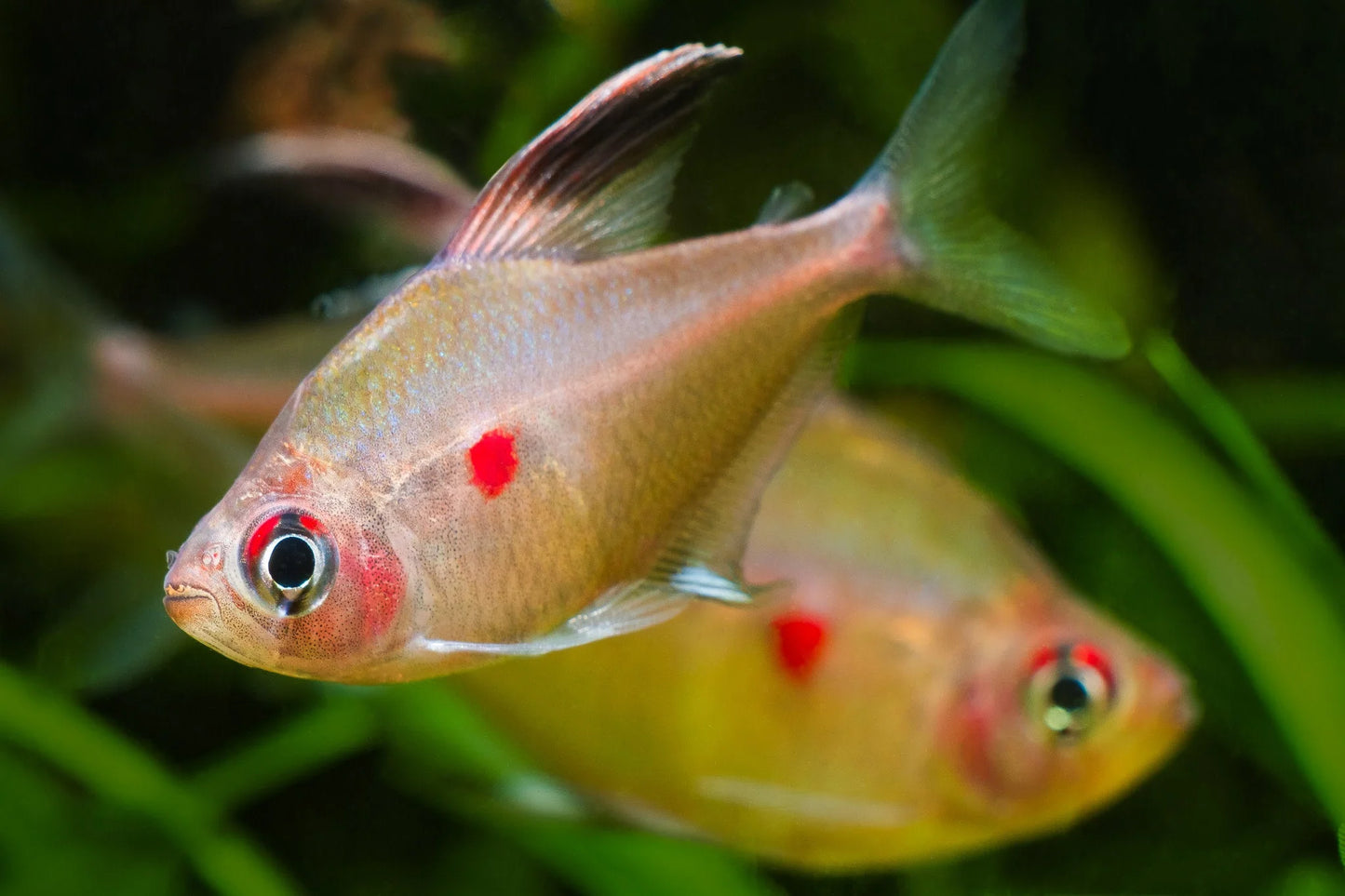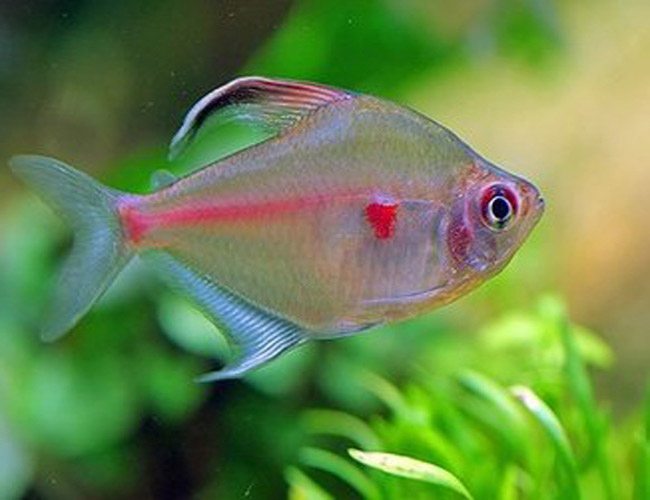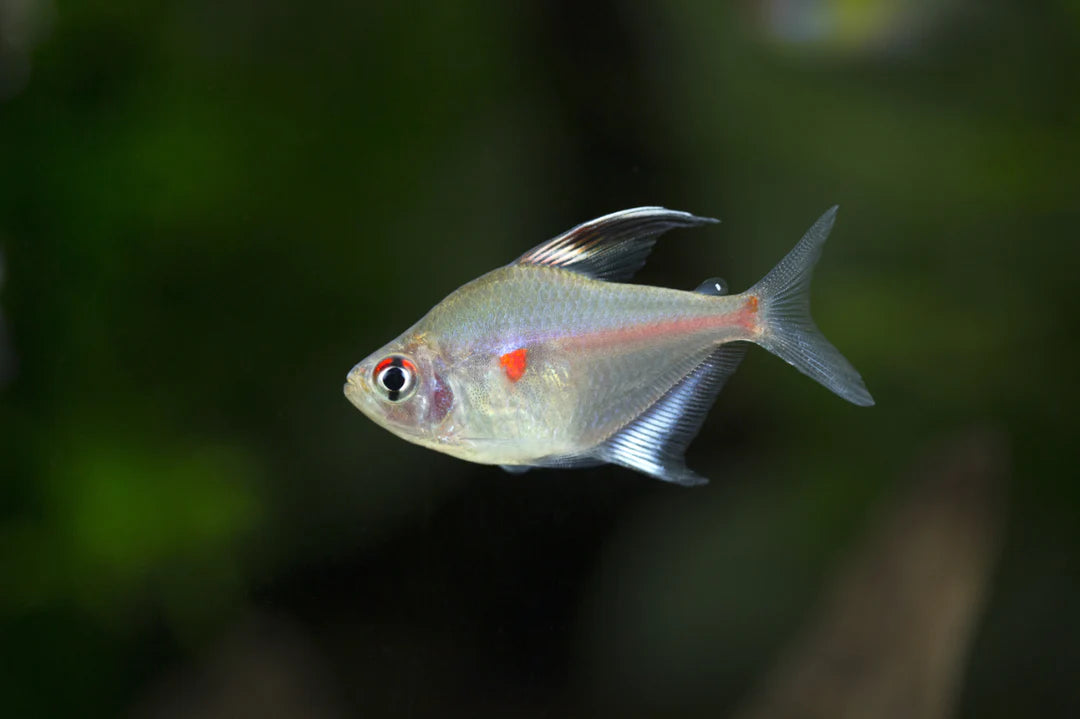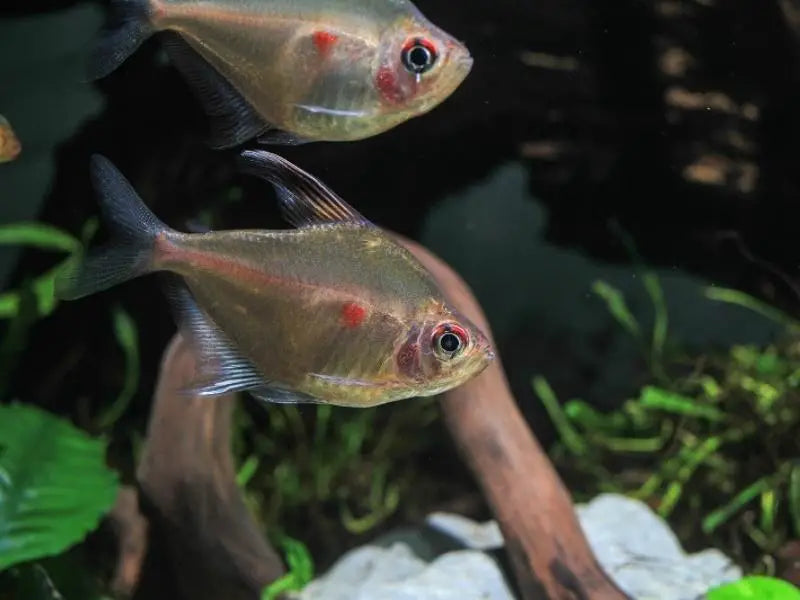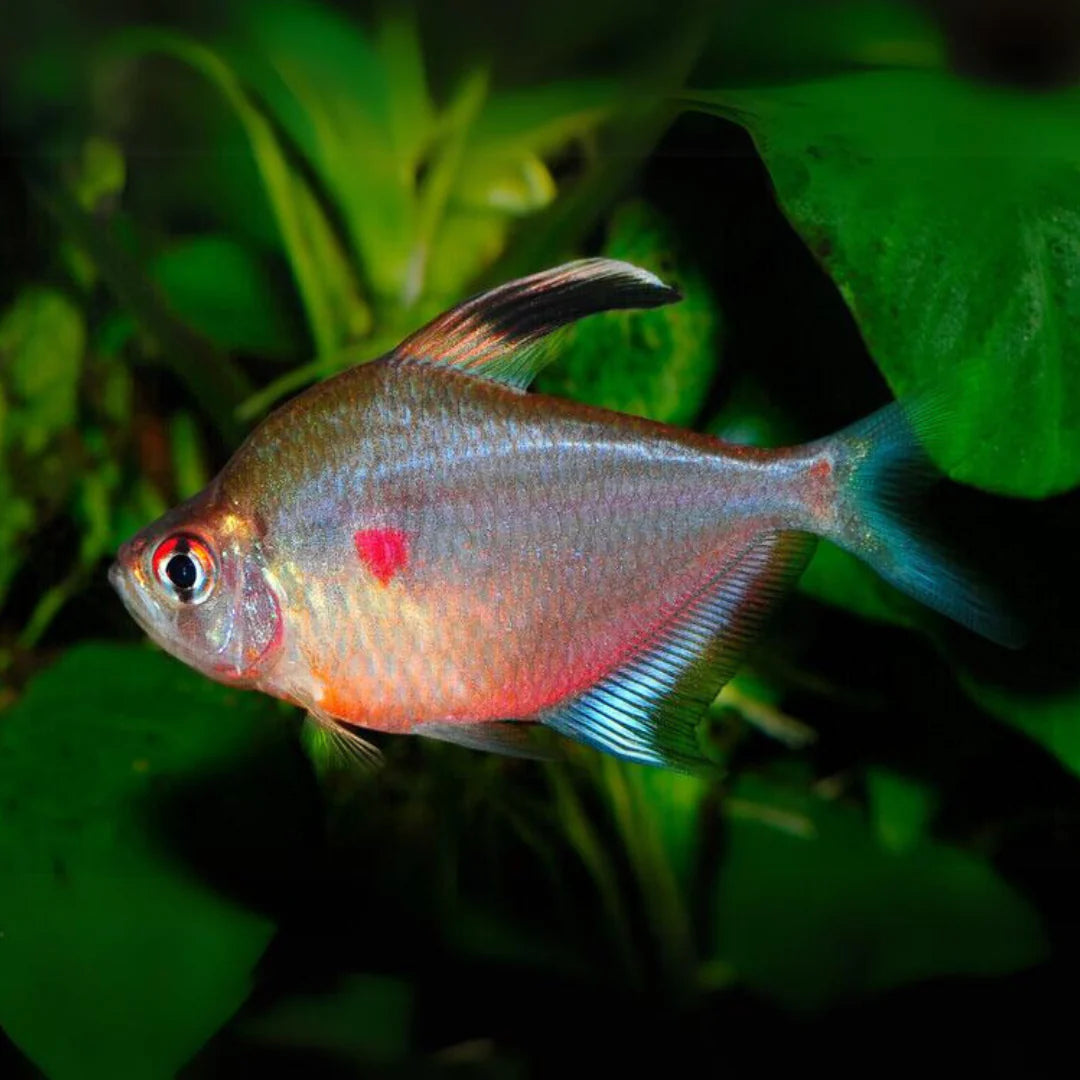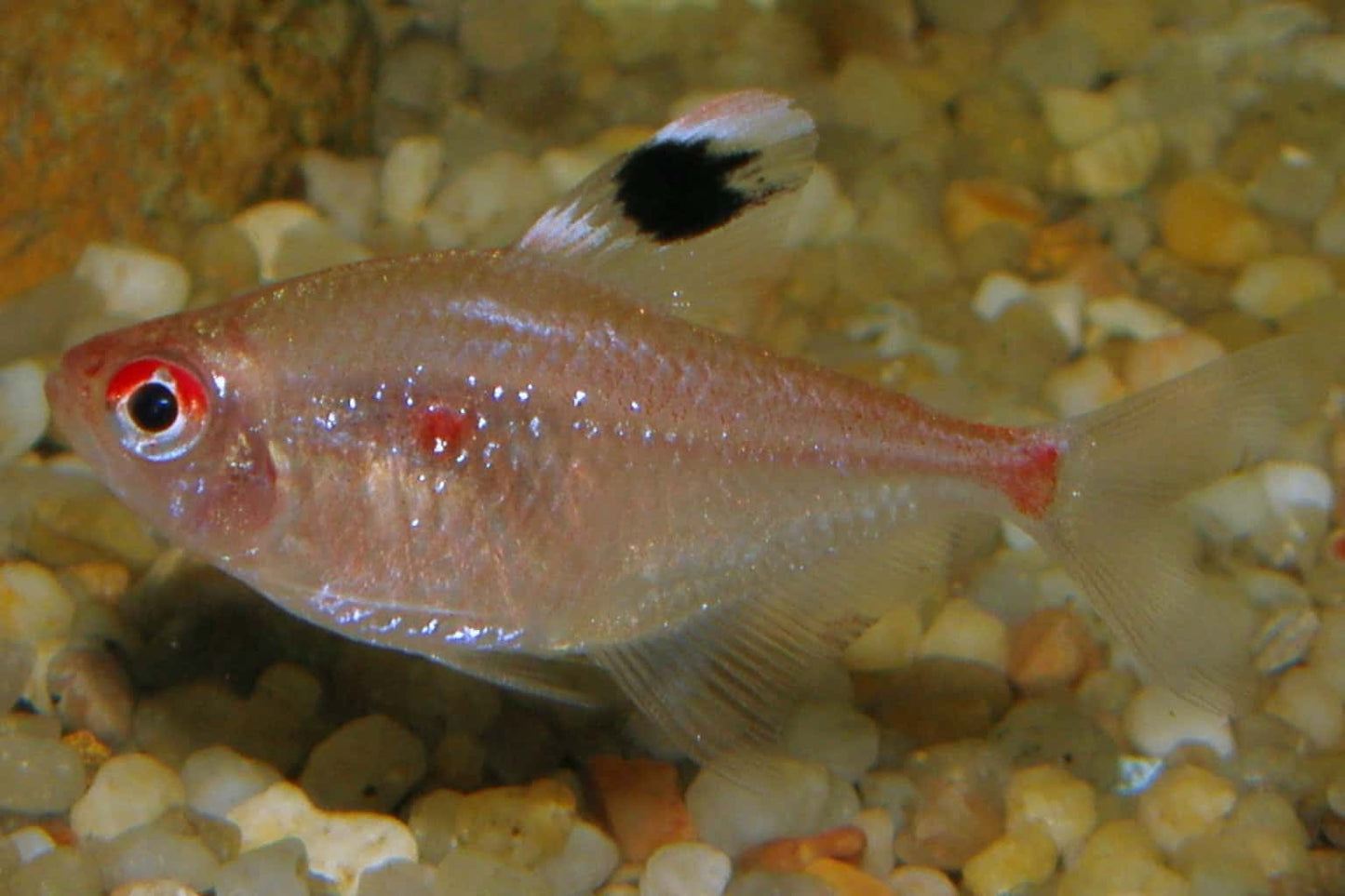Bleeding Heart Tetra (Hyphessobrycon erythrostigma) - Live Fish
Bleeding Heart Tetra (Hyphessobrycon erythrostigma) - Live Fish
Total items
Product subtotal
Detailed Description
Detailed Description
The Bleeding Heart Tetra (Hyphessobrycon erythrostigma) is a popular and visually striking species of freshwater fish, known for the distinctive red marking on its body, resembling a "bleeding heart." Native to South America, it is typically found in slow-moving rivers and streams of the Amazon Basin in countries like Brazil and Peru. Its bold coloration and peaceful demeanor make it an excellent choice for community aquariums.
Key Features of the Bleeding Heart Tetra:
-
Appearance:
- The Bleeding Heart Tetra has a sleek, elongated body that is mostly silvery with a subtle yellowish tint along the sides.
- The most striking feature of the Bleeding Heart Tetra is its red patch on both sides of the body, located just behind the gills. This red marking is what gives the fish its name, as it resembles a bleeding heart.
- The fins are generally translucent, with a slight reddish tint, especially on the tail fin, which is often highlighted with a black spot near its base.
- They typically grow to around 2 to 2.5 inches (5-6 cm) in length, making them a small-to-medium-sized tetra species.
-
Habitat:
- Native to the Amazon Basin, Bleeding Heart Tetras are found in slow-moving rivers and streams with vegetation and submerged wood. These habitats offer plenty of places for the fish to hide and explore.
- In the aquarium, Bleeding Heart Tetras prefer well-planted tanks with soft, slightly acidic water. They do best in water temperatures between 74°F and 82°F (23°C - 28°C), with a pH of 6.0 to 7.5 and moderate hardness.
- Providing a gentle water flow and planted areas is important for simulating their natural habitat.
-
Diet:
- The Bleeding Heart Tetra is an omnivore and will accept a wide variety of foods, including:
- High-quality flake or pellet food
- Frozen or live foods like brine shrimp, bloodworms, daphnia, and mosquito larvae
- Vegetables such as spirulina and blanched spinach
- A varied diet will help keep the fish healthy and maintain its vivid coloration.
- The Bleeding Heart Tetra is an omnivore and will accept a wide variety of foods, including:
-
Behavior:
- Bleeding Heart Tetras are peaceful and social fish, making them ideal for community aquariums. They are typically very mild-mannered and get along well with other species that share similar temperaments.
- As shoaling fish, they do best when kept in groups of 6 or more. In smaller groups, they may become shy or stressed, and their natural behavior may be inhibited.
- They prefer to swim in the middle to upper levels of the tank, adding movement and activity to the aquarium. Their peaceful nature makes them compatible with other non-aggressive species like neon tetras, corydoras catfish, gouramis, and guppies.
-
Tank Care:
- The Bleeding Heart Tetra is relatively hardy but benefits from stable and clean water conditions.
- They prefer a gentle filtration system and a well-maintained tank with moderate water changes to ensure good water quality.
- The fish appreciate a planted tank with live plants, smooth rocks, and driftwood, which mimic their natural habitat and provide hiding spaces for security.
- Regular tank maintenance is important to prevent the accumulation of debris and to maintain optimal water parameters.
-
Breeding:
- Breeding Bleeding Heart Tetras in captivity is possible, although it can be challenging and may require a breeding tank.
- These fish are egg-scattering species, meaning they lay their eggs on the substrate or plants.
- To breed, a group of mature fish (preferably 1 male to 2-3 females) should be conditioned with a high-quality diet, and the water temperature can be slightly increased to simulate the breeding season.
- After spawning, the adults should be removed to prevent them from eating the eggs. The eggs will hatch in about 24 to 36 hours, and the fry will be ready to feed on infusoria or microworms once they are free-swimming.
The Bleeding Heart Tetra is a beautiful and peaceful addition to any community aquarium. With its distinctive red heart-shaped marking, silvery body, and gentle nature, it makes an eye-catching and tranquil centerpiece in a well-planted tank. These tetras are easy to care for, provided their water parameters are met, and they thrive in schools, where their social behavior is at its best. Their peaceful temperament, along with their ability to coexist with a wide variety of other fish, makes them a fantastic choice for aquarists of all experience levels. If you’re looking for a vibrant, active, and easy-going fish, the Bleeding Heart Tetra is an excellent option.
Product features
Product features
Materials and care
Materials and care
Merchandising tips
Merchandising tips
Share
